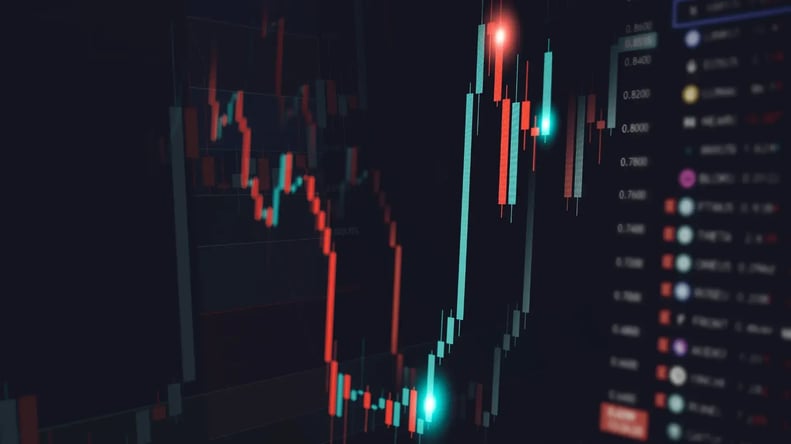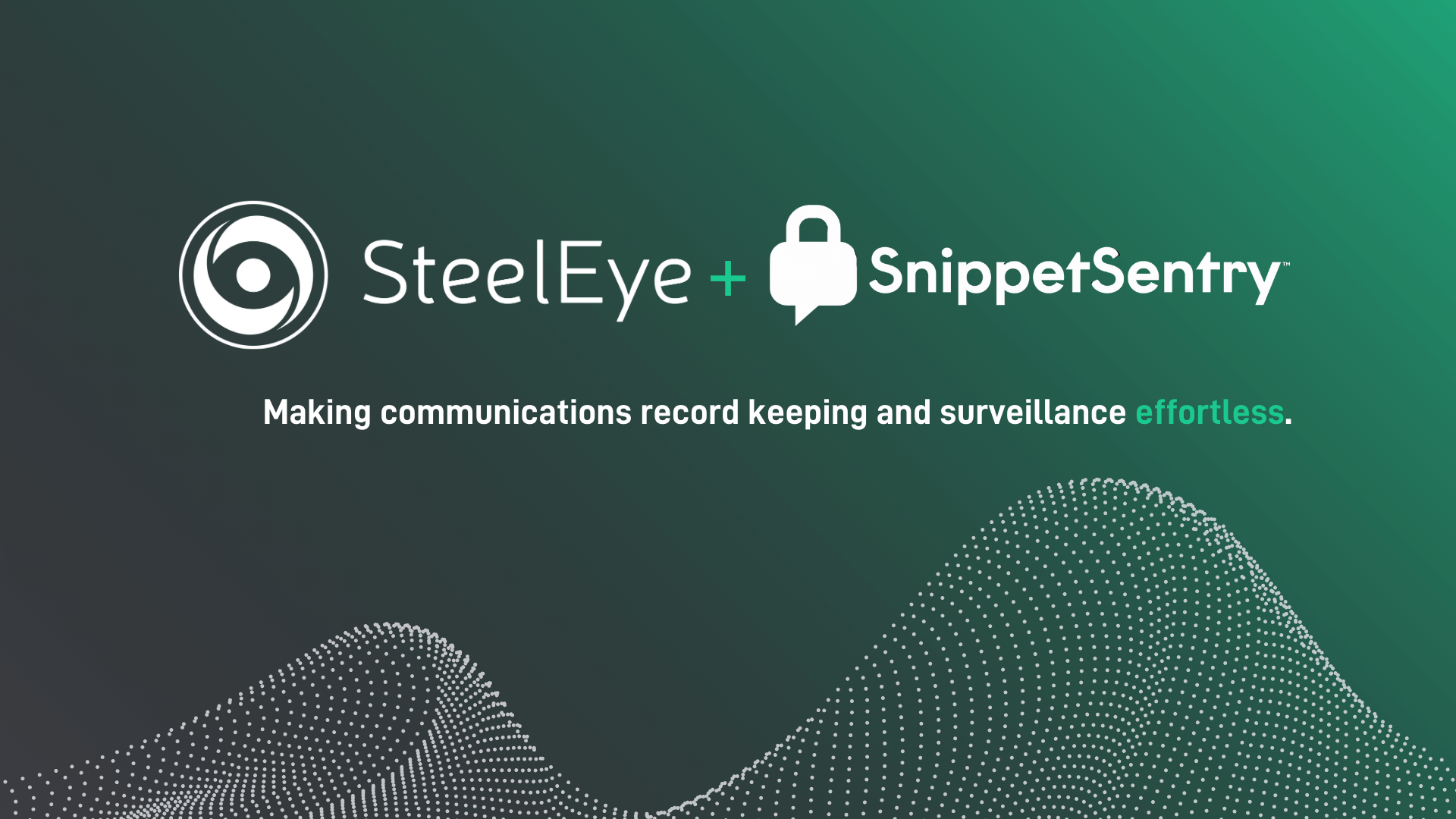Image Copyright: Financial Conduct Authority
The financial markets are evolving at an unprecedented rate, driven by increasingly complex trading strategies and sophisticated technologies.
As trading becomes more algorithmically driven and supported by advanced analytics, machine learning, and artificial intelligence (AI), the challenge of monitoring and detecting market abuse has grown significantly. Therefore, surveillance strategies must keep pace to maintain the integrity of financial markets.
Between 1 May and 22 July 2024, SteelEye participated in the Financial Conduct Authority's (FCA) TechSprint, which focused on how AI can be utilized to enhance market abuse detection, identify complex forms of abuse, and better detect anomalies. According to the FCA, the aim of the TechSprint was to "bring out solutions and proofs of concepts through the innovative and responsible use of data to improve detection rates, such as through increasing accuracy, enhanced anomaly detection, or revolutionizing certain aspects of market abuse surveillance."
In this blog, we explore three critical problem statements highlighted by the FCA as part of the TechSprint and how AI can address them.
FCA Problem Statement One: Improved Accuracy of Market Abuse Detection
How can AI in post-trade market abuse surveillance help reduce false positives, produce a higher proportion of true positives, and result in more accurate alerts and signals?

Challenge: Traditional market abuse detection systems often produce a high number of false positives. These cause operational inefficiencies by increasing workload, as compliance officers spend excessive time investigating false alerts, diverting resources from true positives. This, in turn, can lead to alert fatigue, where the volume of false alerts can demotivate and exhaust compliance analysts. Additionally, the financial impact can be significant considering the operational burden false positives impose. Firms also risk facing fines and penalties for missing actual compliance issues, which in turn erode customer and regulatory trust, leading to reputation damage.
Solution: AI-powered surveillance can enhance the accuracy of market abuse detection by complementing risk-based approaches with additional analysis, risk scoring, and triaging.
AI-based systems excel at pattern analysis, which is critical in reducing false positives and increasing the percentage of true positives. By examining datasets such as trader behavior, trading patterns, market data, news, and communications, AI-based pattern analysis can determine what “normal” looks like and flag anomalies that fall outside the norm.
AI can thereafter be deployed for alert triage, scoring, and prioritization of alerts. Large Language Models (LLMs) can analyze the data that has triggered an alert and assess whether a breach occurred based on a detailed understanding of market abuse regulations. They can then provide a risk score accordingly. This can help compliance analysts focus on the most significant risks first and quickly analyze what has taken place— streamlining their efforts and improving overall efficiency.
The goal is not for the AI system to replace human analysts but rather to enhance their capabilities by providing better information. AI can speed up investigations by offering relevant insights on why and how potential market abuse might occur and by providing risk scores that enable analysts to focus on the most pressing risks more quickly. As such, AI models serve as a valuable addition to a risk-based system.
FCA Problem Statement Two: Detection of Instances of Complex Market Abuse
How can AI identify signals or instances of more complex types of market abuse involving the analysis of multiple datasets that traditional rules-based surveillance tools currently struggle to identify?

Challenge: Traditional rules-based surveillance tools often struggle to identify complex types of market abuse that require analyzing multiple datasets, intricate data relationships, and sophisticated patterns. Detecting market abuse, such as cross-product manipulation, is particularly challenging due to the lack of underlying data commonalities. Identifying this form of abuse requires a deep analysis of how different financial products correlate and move together in the market. It is about understanding the relationships and interactions between products.
Solution: AI excels at integrating and analyzing multiple datasets and the relationships between them to identify complex forms of market abuse. Advanced statistical analysis techniques and machine learning models can cross-correlate multiple datasets and carry out pattern matching, uncovering anomalies and hidden relationships. This includes analyzing relationships between various parameters such as traders, time, transactions, trade volume, instruments, news, pricing, and profit and loss data.
LLMs can further enhance this process by examining anomalous behaviors and determining whether any rules were broken based on the regulatory definition of market abuse. By leveraging these advanced techniques, AI systems can detect sophisticated market manipulation strategies that would otherwise go unnoticed, ensuring a more robust and comprehensive surveillance approach.
How can AI help identify previously undetected anomalies indicative of market abuse, manipulative strategies, and disruptive trading practices that may give market participants an unfair advantage?

Challenge: Financial markets generate vast amounts of data. Analyzing this data to detect subtle and previously undetected anomalies requires sophisticated algorithms capable of handling large-scale, high-frequency data, something that traditional surveillance systems struggle with.
Solution: AI technologies excel at anomaly detection, which can help identify previously undetected anomalies and unusual trading patterns. AI systems can continuously monitor datasets like trader behavior, trading patterns, market data, news, and communications, learning what constitutes normal behavior and flagging any deviations as potential market abuse. This can include new and existing data sets. For example, AI models can understand the behavior of individual market participants, detecting deviations from typical trading behavior that may indicate manipulative strategies.
As trading strategies become more complex and markets evolve, the need for sophisticated market abuse detection tools becomes paramount.
AI offers a promising solution to enhance the accuracy of market abuse detection, identify complex forms of abuse, and transform surveillance through anomaly detection. By harnessing these advanced technologies, regulators and financial institutions can ensure the integrity of financial markets, support innovation, and drive competition in the interests of the broader market and consumers.
How SteelEye Can Help
 SteelEye combines its expertise in big data, analytics, and trading to help financial firms combat all forms of market manipulation, including Cross-Product Manipulation and Cross-Market Manipulation.
SteelEye combines its expertise in big data, analytics, and trading to help financial firms combat all forms of market manipulation, including Cross-Product Manipulation and Cross-Market Manipulation.
By integrating and connecting large volumes of data on a single platform and applying an unparalleled level of automation, SteelEye simplifies trade surveillance and enables financial firms to meet market abuse and trade surveillance obligations efficiently and accurately.
With SteelEye’s integrated surveillance platform, firms can effectively bring together multidimensional data covering trades, orders, communications, and news to better detect market abuse and ultimately get a better understanding of the full picture of what has taken place.







 SteelEye combines its expertise in big data, analytics, and trading to help financial firms combat all forms of market manipulation, including Cross-Product Manipulation and Cross-Market Manipulation.
SteelEye combines its expertise in big data, analytics, and trading to help financial firms combat all forms of market manipulation, including Cross-Product Manipulation and Cross-Market Manipulation.





